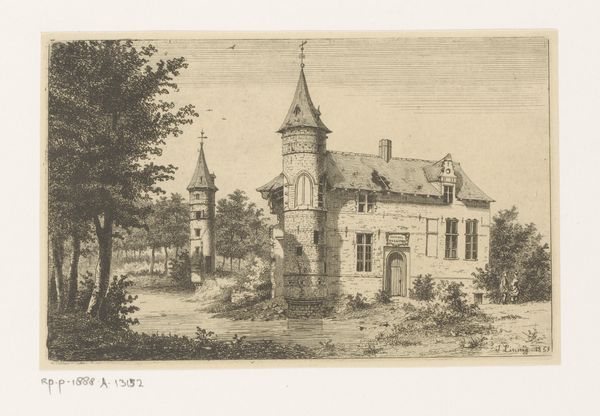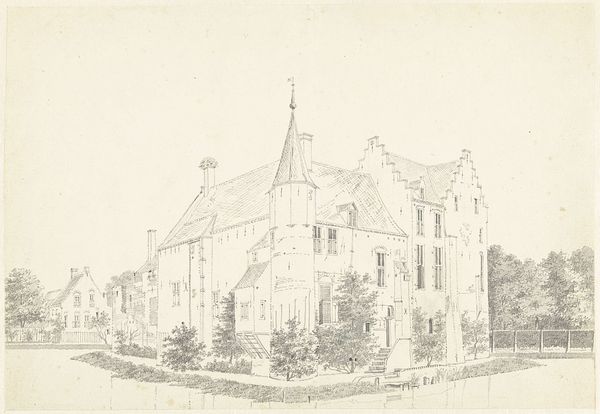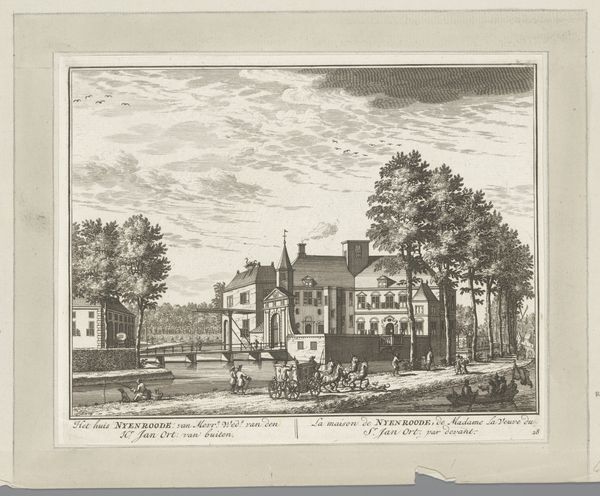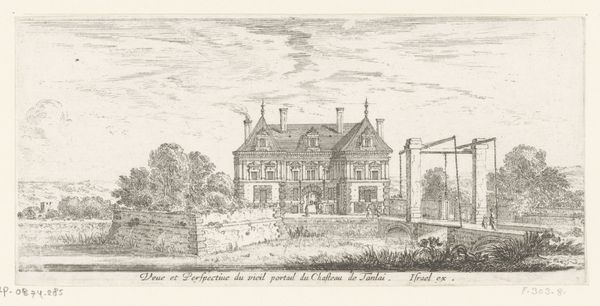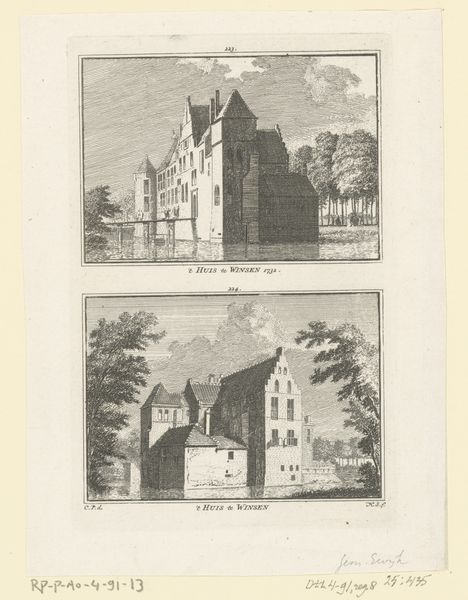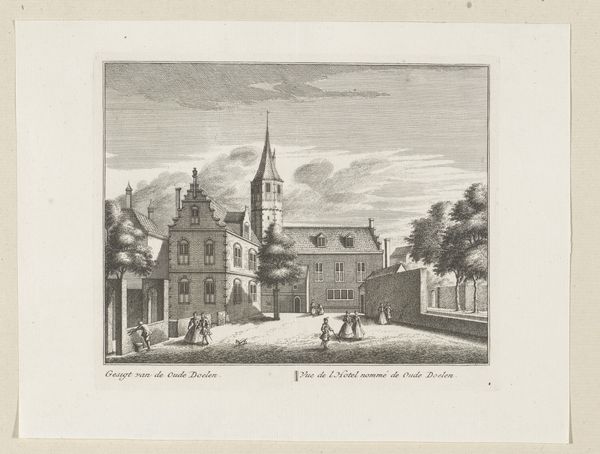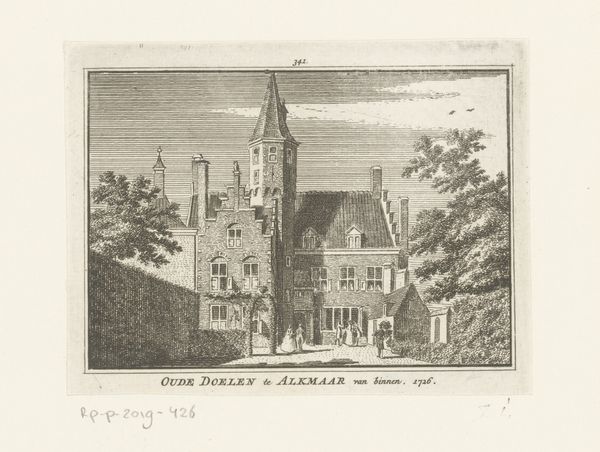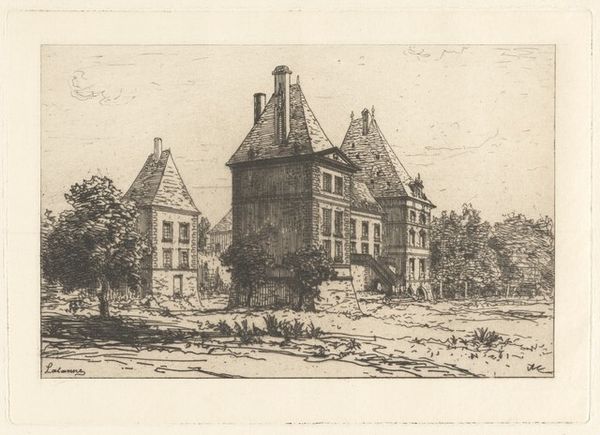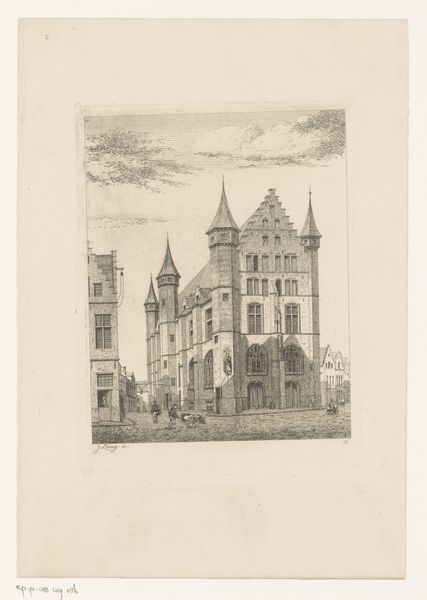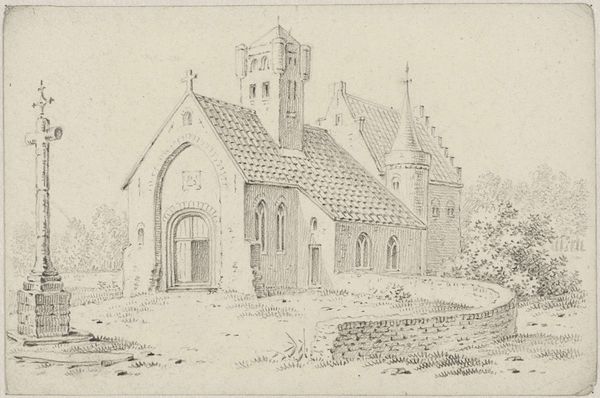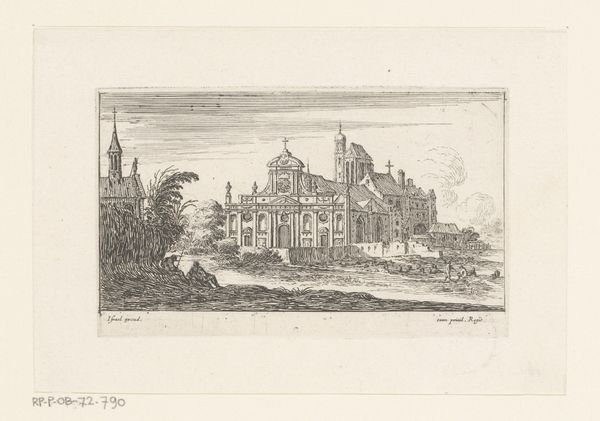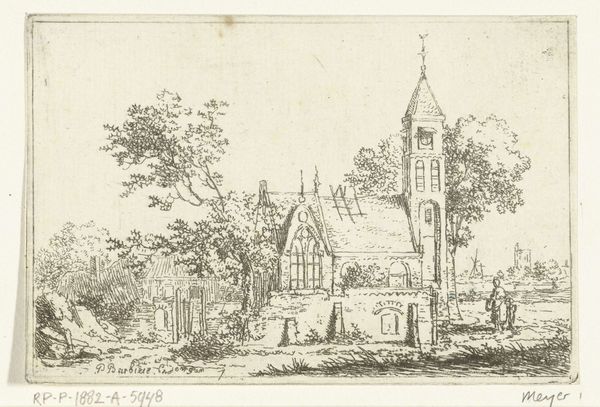
drawing, print, etching, engraving
#
drawing
#
medieval
# print
#
etching
#
landscape
#
engraving
Dimensions: height 116 mm, width 181 mm
Copyright: Rijks Museum: Open Domain
Curator: This delicate etching by Jean Théodore Joseph Linnig from 1853 captures the "Ruïne van kasteel Gallifort bij Deurne"—the ruins of Gallifort Castle near Deurne. Editor: It evokes a strong feeling of quiet abandonment. The way the artist has captured the crumbling brickwork, contrasted with the stillness of the surrounding water… melancholy. Curator: Linnig, known for his detailed architectural renderings, was likely interested in documenting these sites as evidence of the shifting power dynamics and the fading importance of medieval structures in 19th-century Belgian society. Notice how the ruins become almost romantic against the then modernising backdrop. Editor: The ruin itself is loaded with symbolism, wouldn’t you agree? A tower severed from its purpose, a building returning to the earth. The reflection of the tower creates an echo, a phantom limb connecting it to a history of significance, to courtly and feudal history perhaps? Curator: Precisely. The "ruin" motif became exceptionally popular during the Romantic era. For many, they were tangible links to the past, encouraging reflection on history, national identity and time's relentless march. Editor: There's also a moral element at play, too, I think. The imagery of the cross topping both the tower and what remains of the original castle. Here the image suggests a fading medieval order yields to religious or moral implications for the future. Curator: Absolutely. These ruins become not just relics of history, but cautionary tales, visual reminders of transience, the inevitable decay of power, wealth, and institutions. The artist leaves room for his public to consider progress itself. Editor: Well, considering the emotional and visual power held within symbolic objects has certainly given me a fresh perspective. The way Linnig layers both memory and landscape makes the entire composition that much more resonant. Curator: Yes, observing how historical subjects were represented and memorialized through the era's art underscores art's vital role in the making of our visual culture. Thank you for those layered interpretations.
Comments
No comments
Be the first to comment and join the conversation on the ultimate creative platform.
